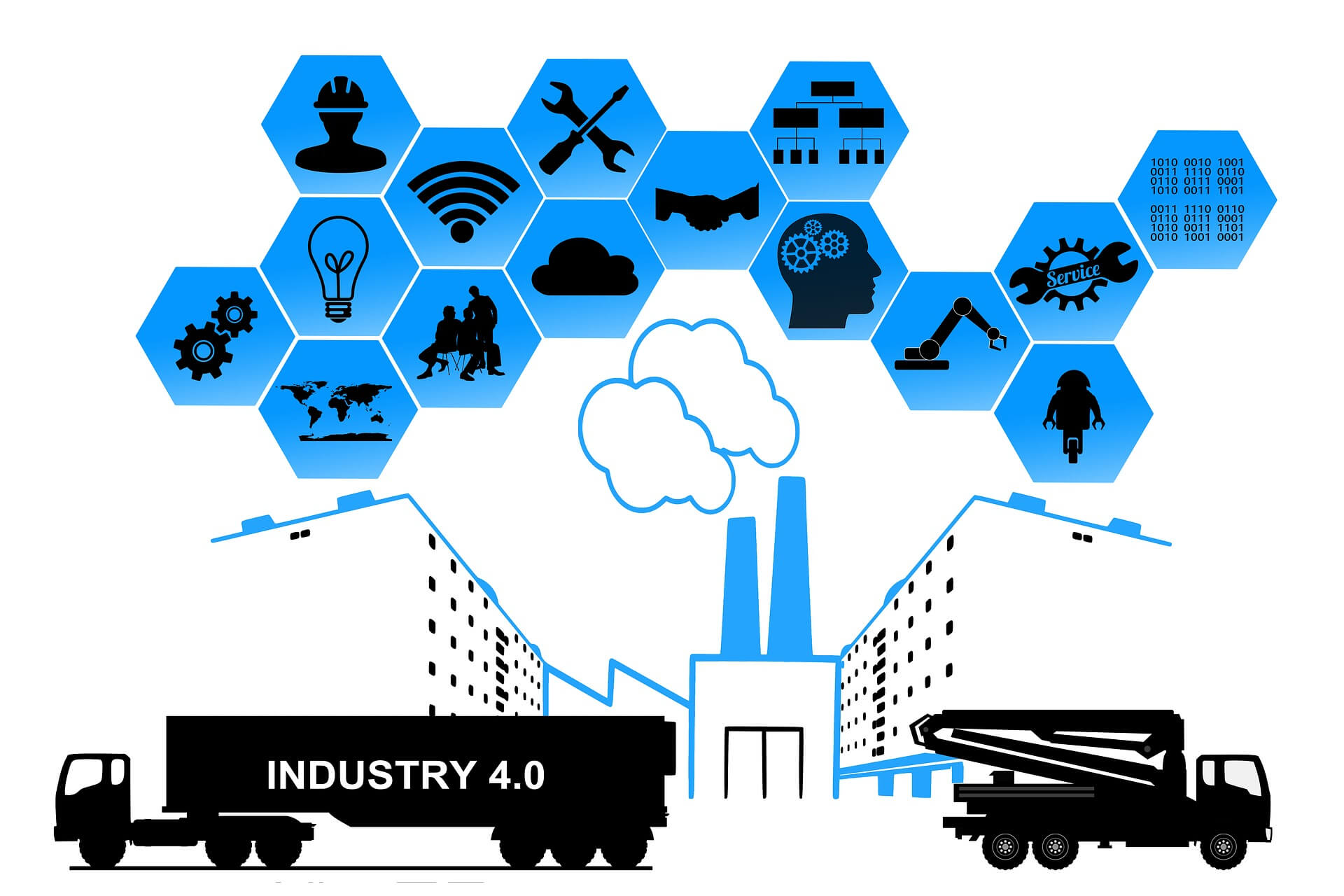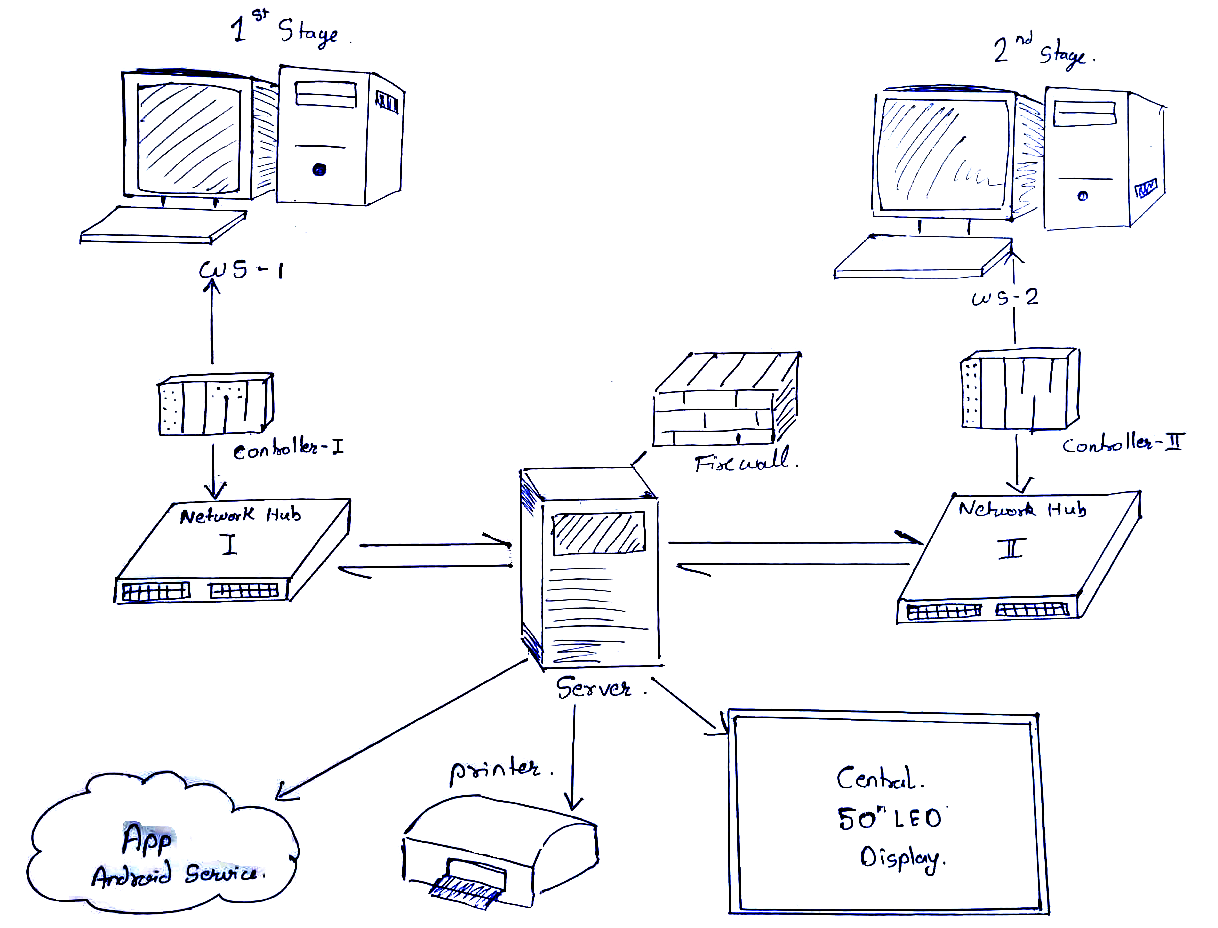The Flue Feeding System Consists of the following Parts:
- Crusher
- Bucket Elevator
- Hopper
- Screw Feeder
- Primary Air Fan (PA Fan)
Crusher
A crusher is a machine designed to reduce large Coal into smaller Coals, gravel, or rock dust. Crushers are machines which use a metal surface to break or compress materials.
Mining operations use crushers, commonly classified by the degree to which they fragment the starting material, with primary and secondary crushers handling course materials, and tertiary and quaternary crushers reducing ore particles to finer gradations.
Each crusher is designed to work with a certain maximum size of raw material, and often delivers its output to a screening machine which sorts and directs the product for further processing.
Typically, crushing stages are followed by milling stages if the materials need to be further reduced. Additionally rock breakers are typically located next to a crusher to reduce oversize material too large for a crusher. Crushers are used to reduce particle size enough so that the material can be processed into finer particles in a grinder.
A typical processing line at a mine might consist of a crusher followed by a SAG mill followed by a ball mill. In this context, the SAG mill and ball mill are considered grinders rather than crushers. Crushers may be used to reduce the size, or change the form, of waste materials so they can be more easily disposed of or recycled, or to reduce the size of a solid mix of raw materials (as in rock ore), so that pieces of different composition can be differentiated.
Crushing is the process of transferring a force amplified by mechanical advantage through a material made of molecules that bond together more strongly, and resist deformation more, than those in the material being crushed do.
Crushing devices hold material between two parallel or tangent solid surfaces, and apply sufficient force to bring the surfaces together to generate enough energy within the material being crushed so that its molecules separate from (fracturing), or change alignment in relation to (deformation), each other.
The earliest crushers were handheld stones, where the weight of the stone provided a boost to muscle power, used against a stone anvil. Querns and mortars are types of these crushing devices.
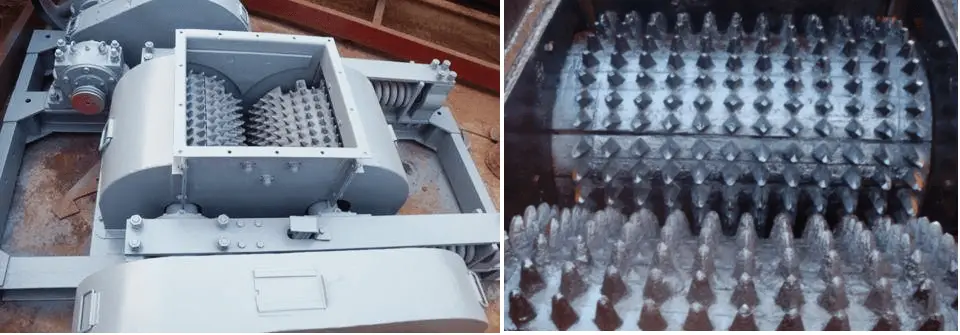
Bucket Elevator
The recycling bucket of bucket elevator scoops the materials up from the coal crusher with the help of belt conveyor, the bucket elevator elevate to the top with the conveyor belt or chain , flip down after top wheel, and poured material into the Storage Hooper.

Belt driving (The belt normally is rubber belt) of bucket elevator is installed at top and down transmission drum or the top and down idler drum. Chain driving (generally are two parallel transmission chain) is installed on the bucket elevator, at the top and down, there are a pair of drive sprocket.
At down and top, there is a pair of idler sprocket. Normally the bucket elevator is with shell to prevent the dust inside the bucket and also generated during delivery.
Bucket Elevator Animation
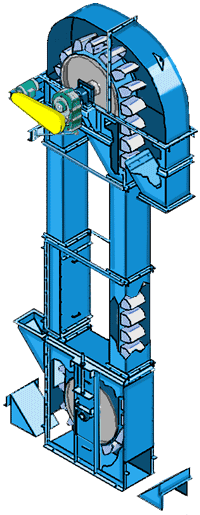
Hopper
In a mass flow hopper, all the material inside the hopper moves down the walls and exits. The flow is based upon a first-in, first-out principle and is uniform and reliable upon discharge. Moisture content, temperature, age, oil content, and solid levels must be regulated to ensure effective flow.

There are two types of hoppers, conical and wedge-shaped. The hopper shown below to the right is conical whereas a wedge-shaped hopper is a trough with a narrow slit, as shown to the left.
Conical hoppers must be steeper to promote the same amount of flow but wedge-shaped hoppers require a conveyer to collect the materials that exit from it.
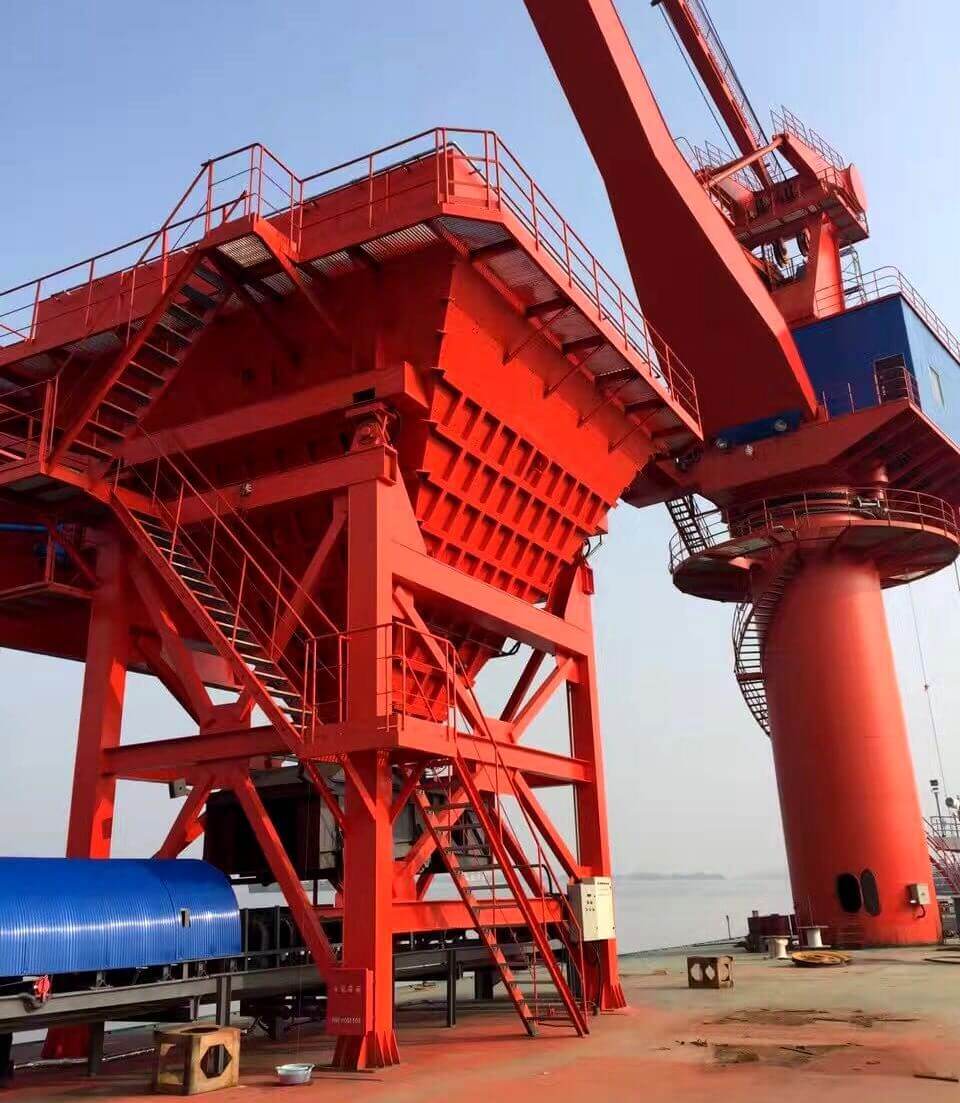
Screw Feeder
Screw conveyors are conveyor systems for bulk materials that are based on the operating principle behind Archimedes’ screw. The conveying element in these conveyors consists of flat metal shaped into a helix (screw spiral).
This helix rotates around the system’s longitudinal axis and conveys bulk material in an axial direction inside a stationary trough or tube (which simultaneously acts as a carrying element). The material being handled can be conveyed horizontally, diagonally, and vertically.
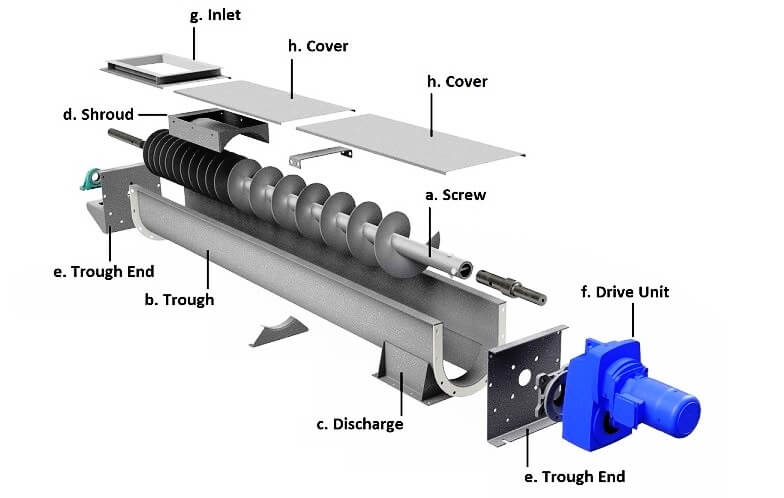
In addition, processing activities such as mixing, dewatering, and compression can be performed while the bulk material is being conveyed, and the latter can also be cooled or dried during the process. Screw conveyors feature a simple design, but are only useful for relatively short distances.
Also, due to the friction exerted by the bulk material inside the screw conveyor trough, screw conveyors require significantly more power than belt conveyors and bucket elevators.
Gravity, as well as the friction between the bulk material and the trough walls, works against the material’s rotation as effected by the screw. If there is a high filling level and the friction on the wall is low, the material will only rotate perpendicularly to the screw axis at the beginning of the screw, meaning that the screw will function as a simple cylinder and the material will not be conveyed.
Because of this, centrifugal force must be used to generate wall friction so as to be able to convey material vertically (this, in turn, requires high screw speeds).
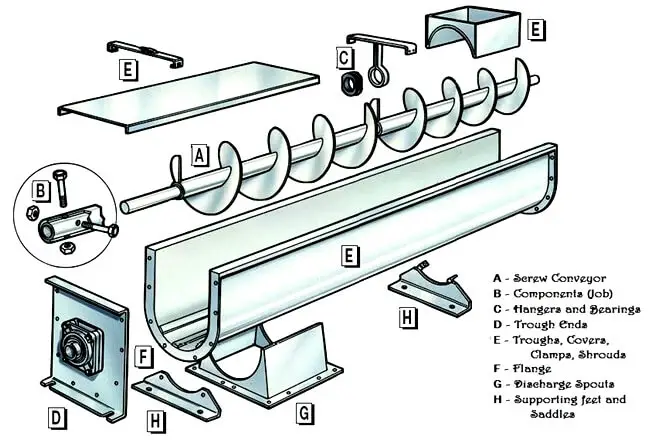
A system’s delivery volume depends on the screw’s speed, the inner and outer diameters, the degree of inclination, the level of filling, and the friction between the material and the screw.
The maximum delivery volume is achieved when the friction on the conveyor screw is low relative to the friction on the trough wall. If liquids are being conveyed, the delivery rate decreases and the level of wear increases, as the chambers are no longer completely separated from each other and backflow occurs as a result.
Primary Air Fans (PA Fans)
A key component of the thermal power generation plant is the boiler, which is also called as steam generator.
The essence of the thermal power generation plant is to create the steam in boilers or steamers; this steam is send at high pressure to a stationary turbine that generates electricity. The coal is first crushed into minute particles using equipment called pulverizes.
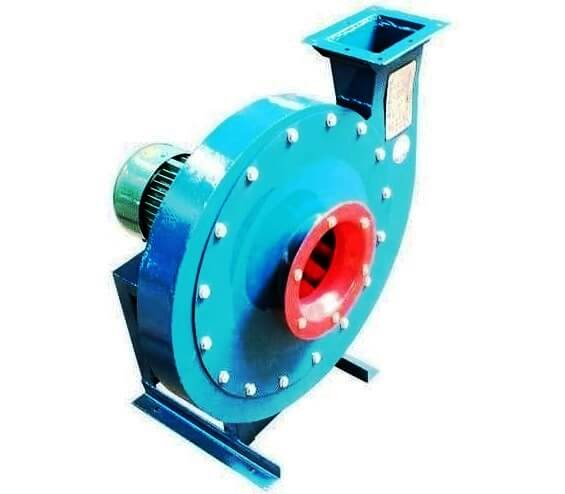
The main function of the Primary air fan or PA fan is to carry the pulverized coal to the furnace as fuel for combustion. This process is used to create the steam that is the primary process in the thermal power plant. In power plants, the PA fans supply air for conveying of the pulverized coal from coal mills to the furnace area.
These primary air fans produce a high pressure to push the coal and air mixture through pulverize into the furnace. The most common configuration of the draught fans used as a PA fan is the backward curved centrifugal fan.
In power plants the PA fans play an important role in supplying air necessary for fuel combustion and in the maintenance of furnace temperature.
The Setup of Coal Fuel Feeding System
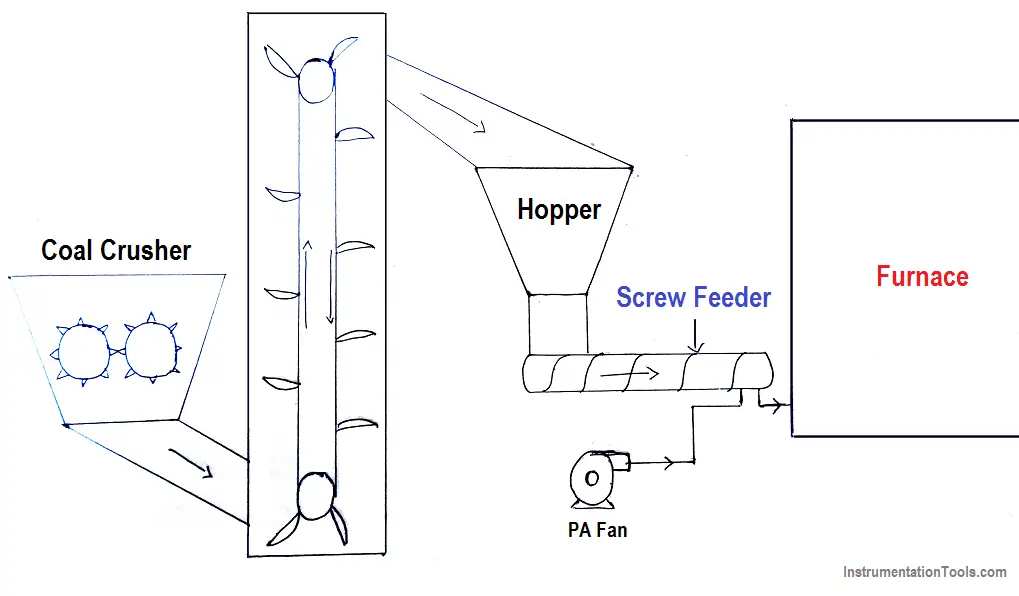
Author: Jadhav Amit R
